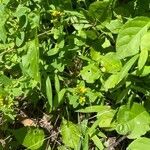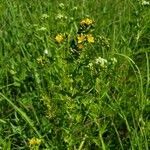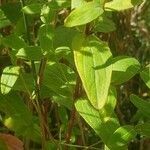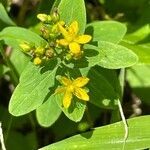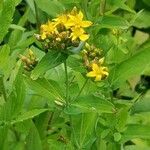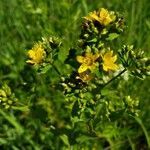Erect perennial 5–10 dm, with few branches below the infl; lvs oblong-elliptic to narrowly oblong, the larger 4–6 cm and over 1 cm wide, blunt or even retuse; infl usually small, crowded; fls short-pediceled, 8–15 mm wide; sep heavily dotted and lined with black, ovate-oblong, obtuse or broadly acute, 2.5–4 mm; pet 4–7 mm, copiously beset with amber glands; seeds under 1 mm; 2n=16. Moist or dry soil, fields, and open woods; Que. to Minn., s. to Fla., Miss., and Okla. June–Aug. (H. subpetiolatum)
